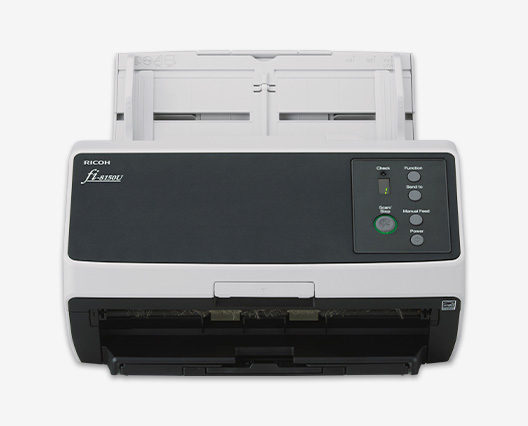
fi-8150
ADF Scanner for Light Workloads
Small, private banks seek imaging solutions that could help reduce the need for physical document storage and create a secure, efficient way to share documents among its branches. With the right solution, bank documents can be easily scanned, indexed, and stored on the corporate network for fast retrieval, protected using built-in enterprise security features.
Independent banks struggle to manage a growing volume of paperwork, including loan files, customer deposit documents, and other documents. These firms need an imaging solution that can help reduce the need for physical document storage and create a secure, efficient way to share documents among various locations.
Tradition Capital Bank is a small, private banking firm that focuses on high-net-worth individuals, their business and their families by offering a full range of banking and cash management products and services. Its management team realized that after years in operation, it was running out of filing cabinet space to organize and store files. After expanding to additional branch offices, a need to share loan files among employees across offices emerged. Previously, employees were frequently transporting paper documents over from one location to another which was not only inefficient, but potentially insecure. They began to consider a scanning solution to help them collaborate digitally.
In the past, when a loan document was received, it was printed and punched. Then an employee would have to find the right folder in a sea of filing cabinets, open the folder to the correct section, and file the document. This process would take between 5 and 6 minutes. Now, anyone involved in the loan process can upload a document to the system as soon as they receive it. The new process takes roughly 45 seconds to complete. And searches based on metadata are completed within seconds.

Tradition Capital Bank chose fi Series document scanners alongside an enterprise content management software for seamless integration into current operations. Bank documents were easily scanned, indexed, and stored on the corporate network for fast retrieval, protected using built-in enterprise security features.
In an effort to minimize disruptions during the transition from paper to electronic files, the bank’s plans for the deployment included implementing rules for storing and accessing the digital documents.
After scanning, documents are stored on a secure cloud database, where they are accessible through the company’s network. The fi Series scanner software includes Optical Character Recognition (OCR) technology used to extract information and incorporate metadata that is tagged to documents as they go through the scanning process. This creates searchable files and allows for simple, fast file organization.
By incorporating digitization and scanning technology, banks can improve processes that are vital for smooth daily operations. The solution makes it much easier for employees to search for and find documents and allows employees in remote locations to quickly access important information.
The technology can also transform and expedite key business processes by giving employees greater control over indexing and searching through an array of documents. Tradition Capital Bank found it improved the speed and ease in loan applications, among other uses.
“In the past, when a loan document was received, it was printed and punched. Then an employee would have to find the right folder in a sea of filing cabinets, open the folder to the correct section, and file the document. This process would take between 5 and 6 minutes. Now, anyone involved in the loan process can upload a document to the system as soon as they receive it. The new process takes roughly 45 seconds to complete. And searches based on metadata are completed within seconds,” says Shawn Carlson, Director of Information Technology for the bank.
Security of documents can now also be dramatically improved from the days when banks stored paper documents in locked filing cabinets. Managers can secure access to files based on employee need and restrict particular documents as necessary. When firms go through audits and regulatory exams, the added security enhances compliance with internal security policies and industry regulations.